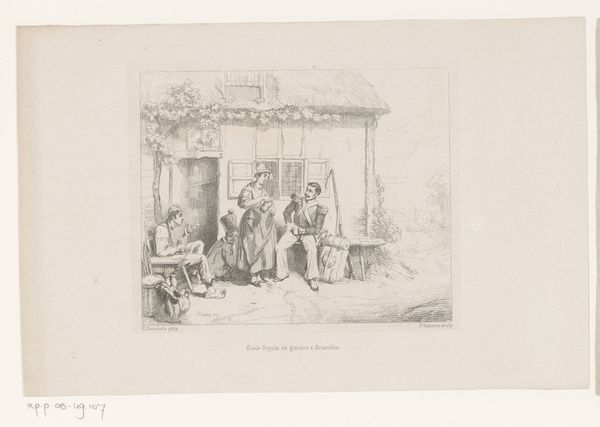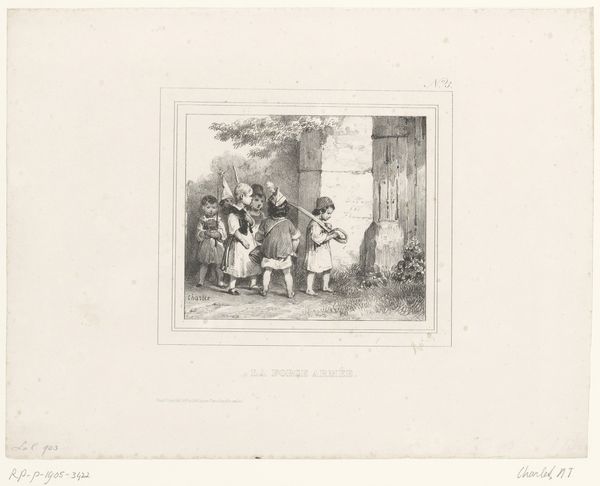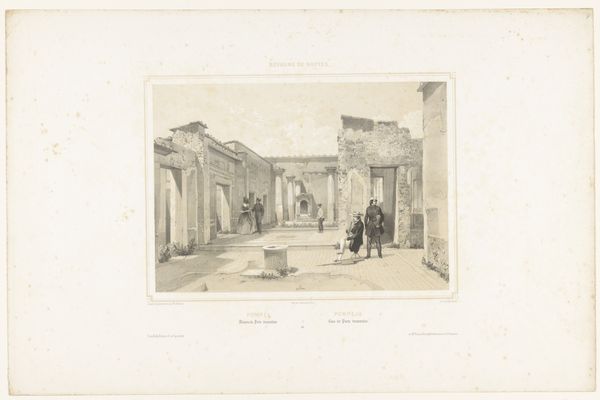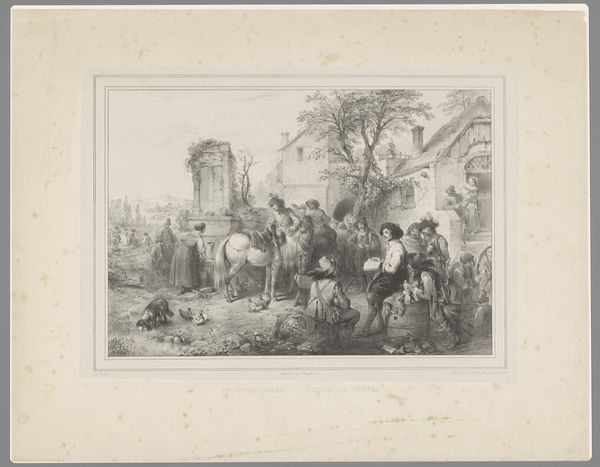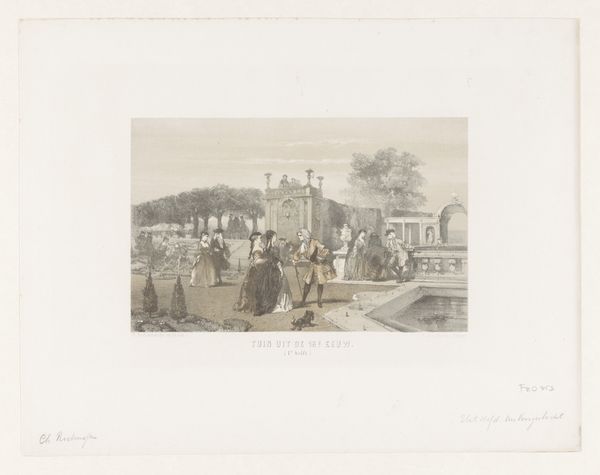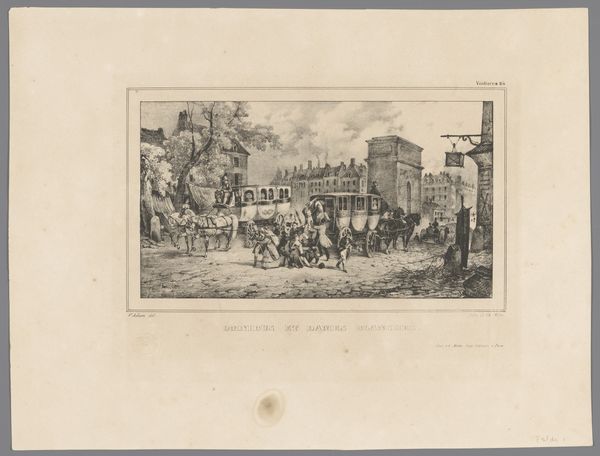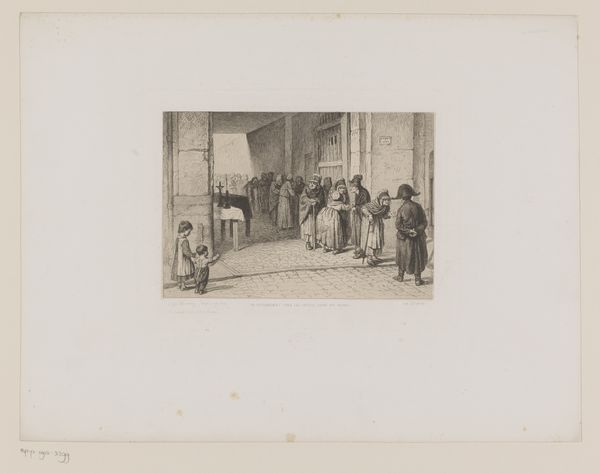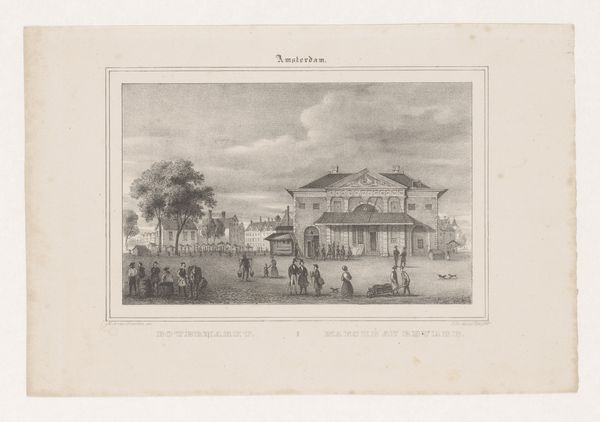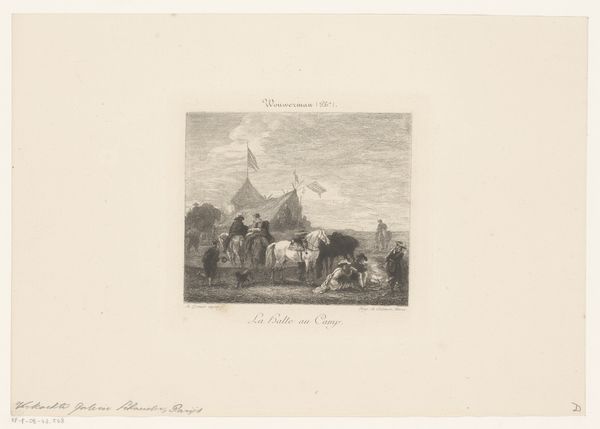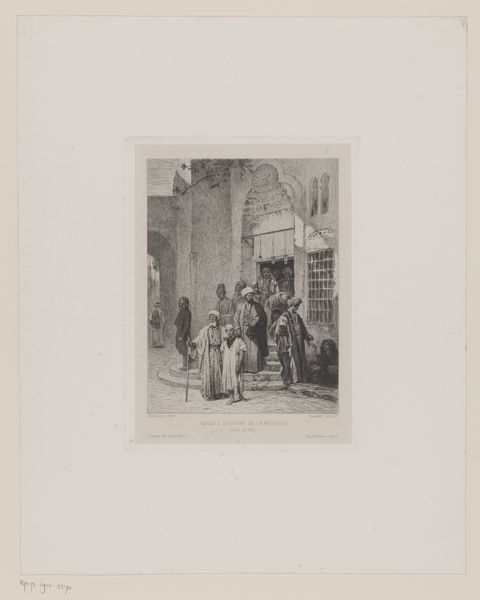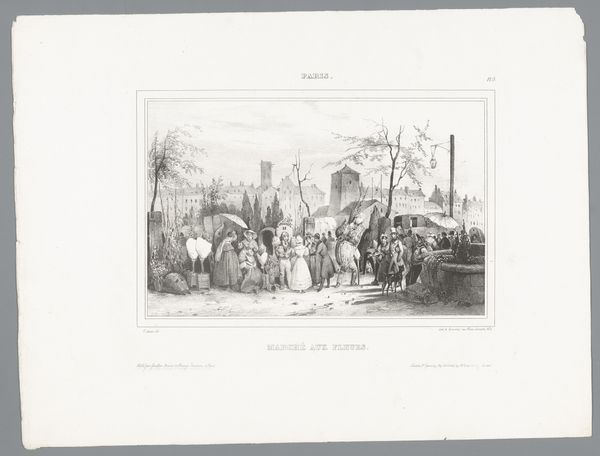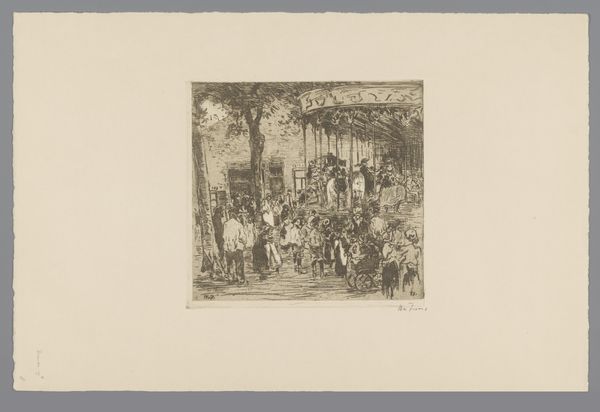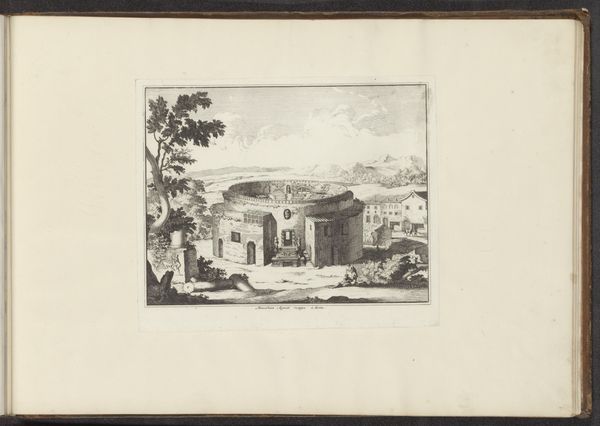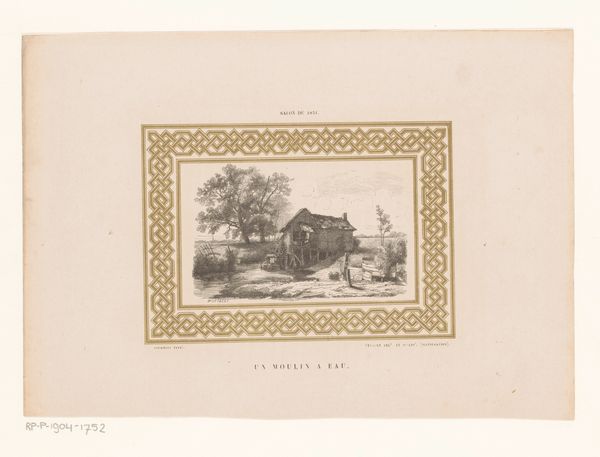
drawing, print, ink
#
drawing
# print
#
landscape
#
figuration
#
ink
#
genre-painting
#
realism
Dimensions: height 242 mm, width 319 mm
Copyright: Rijks Museum: Open Domain
Curator: This drawing, created in 1875, is titled “Group of Soldiers in a Camp” by Emile Boilvin. It’s rendered in ink, producing a very detailed print. My first impression is one of controlled chaos. What strikes you? Editor: The tonal range is actually quite delicate for ink; look how Boilvin modulates light. I immediately notice the geometric simplicity of the building contrasted with the fluidity of the figures, really grounding the scene. It appears classical with its portico; yet the chaotic subject matter suggests a more modern concern with realism. Curator: True, but look beyond the surface. Notice how the soldiers aren't just resting, they're positioned in a way that echoes colonial power dynamics. This portrayal reinforces the role of the military as an active force. It seems this "genre-painting" is speaking to broader narratives of military operations and their social impact. Editor: But even within the military, there’s a hierarchy depicted, isn't there? Some seated, some standing. There's something visually arresting about the repetition of vertical figures broken only by the seated man; Boilvin subtly manipulates perspective here, pulling the eye through. Curator: And it is crucial to remember how art shapes public perception. Pieces such as these reinforce societal structures and justify power. Here the everyday activities within a military encampment subtly normalize their presence in colonized lands. The building serving as backdrop is likely occupied land. Editor: Yet this ‘normalization’ works because of Boilvin’s formal choices. He hasn't chosen some grand scene; instead, by rendering this genre scene he suggests the mundane, which I argue, heightens that normalization rather than relying solely on subject matter. And this contrast is achieved with visual structures, with the horizontal roofline and the dark rectangles that indicate doorways pulling against the softer rendering of mountains, animals, and men. Curator: In sum, we are given an insightful moment captured by Boilvin; though a quiet image, it invites important dialogue on the socio-political context of 19th-century colonialism. Editor: Exactly. An astute work of art that can spark discourse using, at the core, only simple tonal variations and carefully constructed formal relationships.
Comments
No comments
Be the first to comment and join the conversation on the ultimate creative platform.
